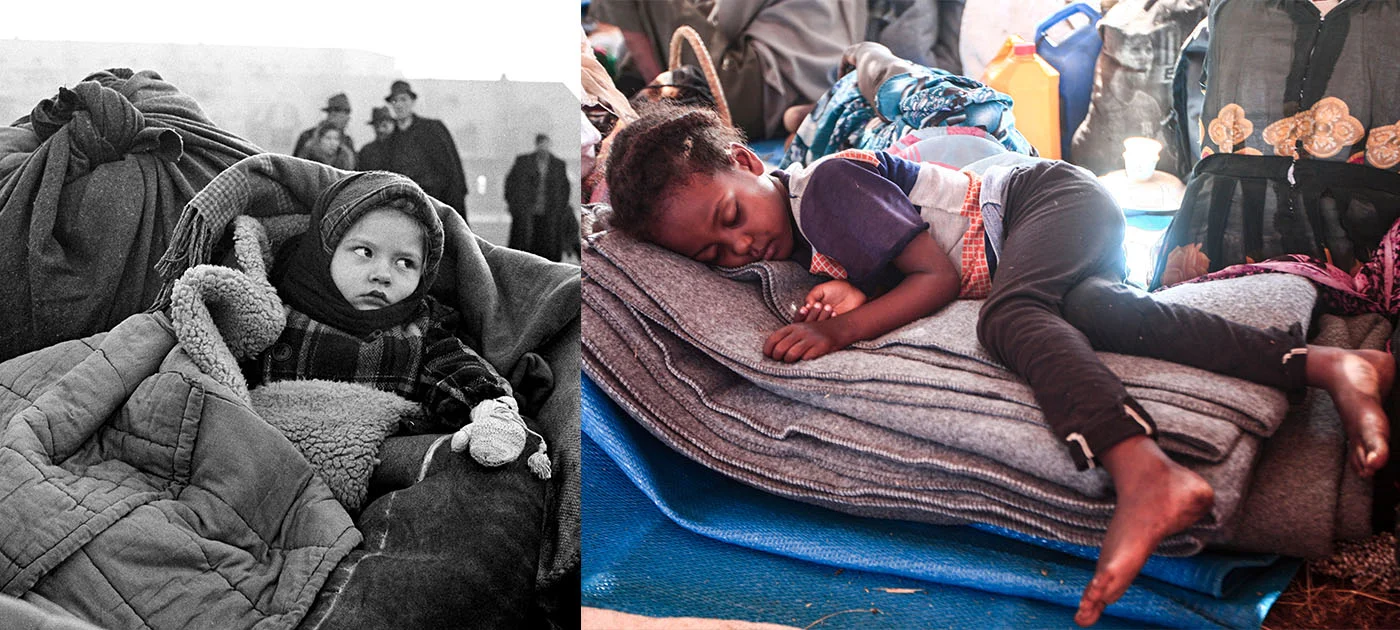Children’s health and wellbeing has improved significantly around the world since 1946, thanks in part to UNICEF’s work. This progress would not have been possible without the support of our partners, donors and staff around the world, and the commitment of children and young people themselves. But we still face major challenges.
75 years after UNICEF was established, more children than ever before are now dependent on humanitarian aid. The increasing number of armed conflicts, natural disasters and the COVID-19 pandemic are making the plight of millions of children worldwide many times worse. This has led to a crisis of children’s rights that threatens the health and wellbeing of girls and boys. UNICEF helped the world’s children get back on their feet after the Second World War, however. We have survived a major global test before. We can do it again.
Challenges from 2021
Humanitarian crises and natural disasters
- More and more children worldwide are suffering from malnutrition. In the Sahel region alone, 2.4 million people are suffering from acute hunger.
- Spring 2021 marks the tenth anniversary of the start of the war in Syria, and the sixth anniversary of the start of the conflict in Yemen. 17 million children are dependent on humanitarian aid. In Ethiopia’s Tigray region, 2.8 million people require humanitarian assistance.
- In the Cabo Delgado province of Mozambique, around 191,000 children have been displaced, with some recruited as child soldiers, kidnapped or even murdered. They are in urgent need of help.
- More than 2.5 million children are living as refugees in the Middle East.
- Crises in Afghanistan, Burkina Faso, South Sudan, Ukraine, Bangladesh, Libya, Venezuela and the Democratic Republic of Congo have been exacerbated by the COVID-19 pandemic. These crises are in danger of fading from the public consciousness.
- The number of climate-related disasters has tripled in the last 30 years, and this negative trend will only continue to worsen.
High infant mortality rates
Although global infant mortality is falling, there are still significant disparities between regions and countries. A child born in Africa is ten times more likely to die during the first month of their life than a child born in a high-income country.
Education crisis
One in five school-age children continue to be denied access to education. More than half of schoolchildren (58 percent) cannot read or write properly by the end of primary school. 1.6 billion children in 190 countries are or have been affected by school closures due to the COVID-19 pandemic. Approximately 463 million children have been excluded from digital distance learning. An estimated 23.8 million children are at risk of dropping out of school due to the pandemic. By 2030, approximately 420 million children will not have received a school education. 1.4 billion school-age children (30 percent) will not be able to acquire the basic knowledge they need. Of these, 825 million, or just over half, are children of secondary school age.
Decline in immunizations
The world is closer than ever to eradicating polio, while the number of deaths from measles, one of the leading causes of death in children under the age of five, declined by 73 percent worldwide between 2000 and 2018, saving the lives of an estimated 23.2 million children. However, the emergence of COVID-19 threatens to reverse this progress by severely limiting access to life-saving vaccines.
Increase in child marriages
COVID-19 will severely compromise efforts to end child marriage, potentially leading to an additional 13 million of them between 2020 and 2030 that could have otherwise been prevented. The toxic combination of the lockdown and the resulting loss of regular schooling, coupled with rising unemployment among parents, will force many children and especially girls into child marriages. Desperate parents hope that such marriages will provide these children with financial and social security.
Outlook
UNICEF is committed to a world in which every child has a fair chance, regardless of skin color, origin or disability. We are doing everything we can to offer children all over the world a bright future.
UNICEF’s aims for 2021 are as follows:
- Reach 149 million women and girls and 7.4 million children with disabilities with inclusive programs;
- Treat 6.3 million children for severe acute malnutrition;
- Vaccinate 27.4 million children against measles;
- Provide 45 million people with clean water;
- Provide 19.2 million children with psychosocial support;
- Protect 17 million children and young women from gender-based violence;
- Provide 93 million children with access to formal and non-formal education;
- Provide 9.6 million families in need with financial support.
